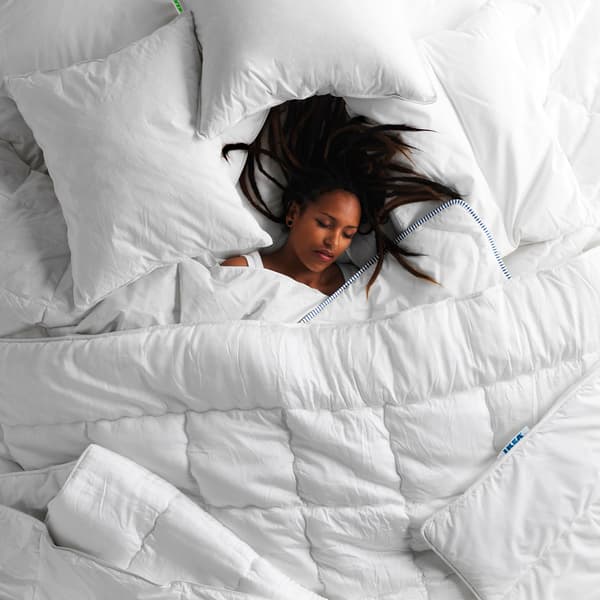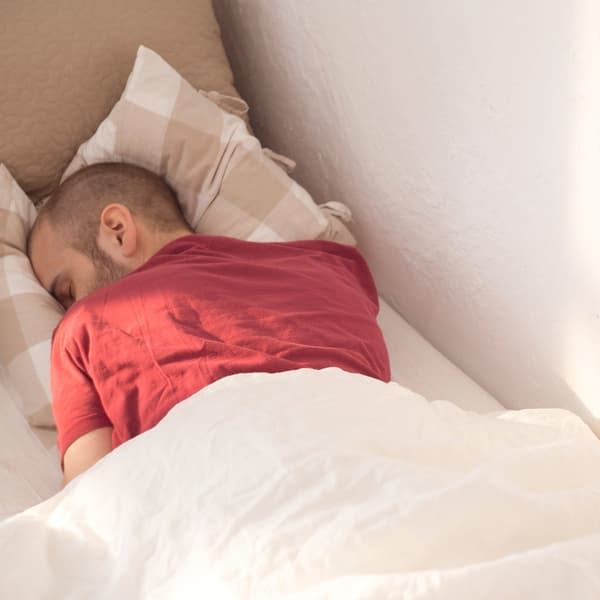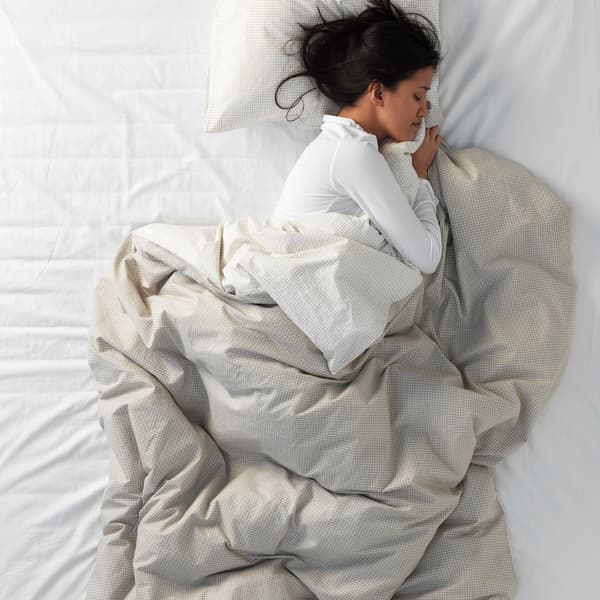The low-down on sleeping positions
Most of us have a favourite way of sleeping, but which positions help us get good-quality sleep? It’s pretty hard to control which positions we adopt when we’re asleep, but there are ways to make sure we stay comfortable in whichever position comes naturally. Here we explore the four main sleeping positions and how to get the best night’s sleep from each one.


On your back
This is considered the best sleeping position for your overall health because it gives the body optimal support while maintaining the natural alignment of your head, neck and spine. The only downside is that it can increase the chances of snoring. Back sleepers should have a mattress that supports the lower neck and spine, and a medium-height pillow.
On your side
Sleeping on your side with your legs straight is thought to be the second-best position for your health because it keeps the spine elongated. Just make sure your head is well supported by a pillow. Side sleepers should have a mattress that supports the spine in a neutral position and a firm, high pillow.
In the foetal position
Sleeping on your side with your legs tucked up towards your chest is thought to be the most popular way to sleep. But while it offers a lot of the same benefits as sleeping on your side, it also takes the spine out of its natural alignment, which increases your chance of discomfort-related sleep disturbance. If you sleep in the foetal position, keep an eye on your pain levels and try out other positions if necessary.
At an incline
Lying down flat to sleep can actually make conditions like snoring, sleep apnoea and acid reflux worse. If you suffer from any of these at night, sleeping at a slight incline isn’t a bad idea. Using extra pillows or an adjustable bed to raise the head above the chest can reduce sleep disturbance and help you rest better at night.
For more sleep inspiration and tips on how to improve your bedroom environment, visit our dedicated sleep hub.







